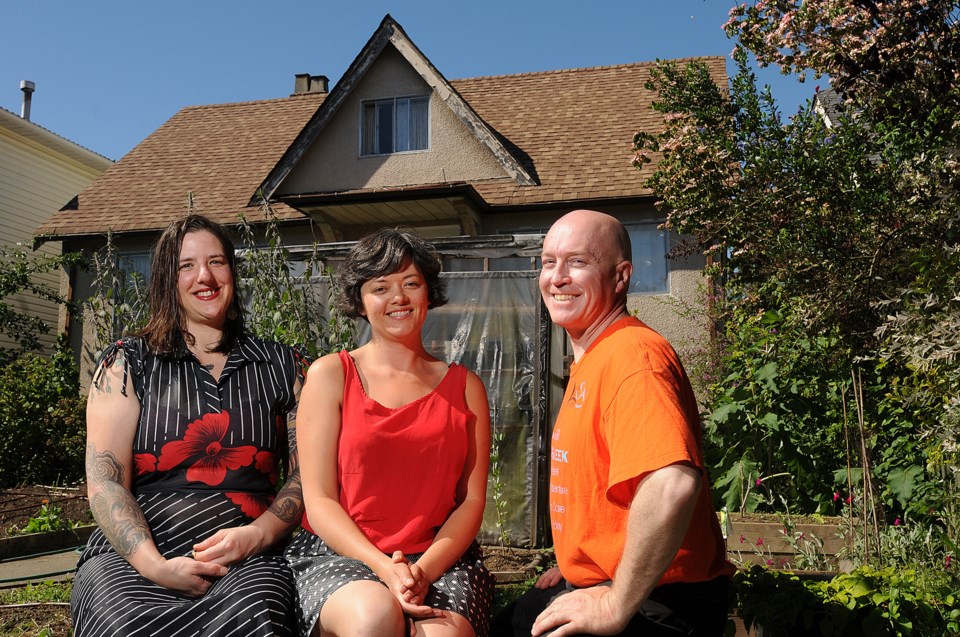A hunger for community is how some describe the growing trend of collective houses in Vancouver.
Gravely Street Farm sits on the corner of Nanaimo and East First Avenue and is home to six individuals, including founder Brennan Wauters.
Together they share everything from grocery bills to value systems.
This is what it means to live in a collective house. Gravely Street Farm was created in 2009, making it a veteran among collective houses in Vancouver.
It was their beliefs around environmentalism and consensus decision-making that brought its residents together, according to Wauters, an electrician apprentice and political activist.
Ami Muranetz, a vocal supporter of collective living, thinks Vancouver’s high housing prices is helping the idea of collective houses gain traction in the city.
“It’s cutting edge and people are going to start looking toward it as housing becomes more unaffordable,” she said.
Muranetz lived in an 11-person collective home called the Light House where rent was as low as $480 for some members. The group was forced to disband in May after the members ran into housing insurance problems with the property manager of the mansion they were leasing.
But the number of collective houses in Vancouver is growing.
There are 47 listed on the Vancouver Collective Houses Network Facebook page, but in the month of June alone, there were five postings by collective houses not included on that list looking for new members. In East Van, there are pockets where collective housing is more concentrated.
In the two-block radius around Gravely Street Farm, there are at least two more.
Shoshana Allice and two others created a collective house on Nanaimo and East First Avenue called the Tea Cozy three months ago. She already understands there are more important benefits than sharing rent.
“The other advantage is having somebody to share meals with and someone to cheer you on and celebrate successes,” she said. “These are the advantages of living in a healthy family. Support when you need it.”
Living collectively can also be seen as a counter-culture to the individual and consumerist ideas in mainstream culture.
“I think there’s a hunger for community, for a different way of being in connection with each other — for something that’s missing in this very independent society,” said Allice, who offers leadership workshops for businesses and individuals.
Members of the Tea Cozy, like at many others, grow some of their own food in the backyard. They currently grow flowers and herbs, but Allice added, they also hope to grow more substantial produce like “tomatoes and all things veggie.”
The growing popularity of these houses means many people are trying collective living for the first time. Currently, there is no formal support system for them, but the collective living community is very helpful by nature.
Ulysses Newcomb lives in the Abaton on Grant and East First Avenue with four others, including a geomorphologist and a burlesque dancer.
Newcomb, a musician, explained that creating community is natural for people living in a collective situation because it’s what you need to do with the people you live with.
Often, people living in collective houses do not know one another before deciding to move in together.
“So that you’re not isolating yourself, you try to engage the community and the residents of your city, and so on and so forth,” said Newcomb. In that way, it’s natural for collective houses “to connect everything.”
This dedication to community means the lifestyle is not for everyone.
“There’s no one size fits all for everyone. I think collective living is for someone who sees the value in community as a way of being gentle on the planet,” said Allice, who added in most cases, collective living is a long-term choice. “There’s a commitment to these relationships. It’s not just about getting one’s way until the next person comes along.”
With four people sharing one bathroom at the Tea Cozy, Allice has sound advice for those wanting to live collectively:
“There is a level of generosity and communication skills that’s required.”



